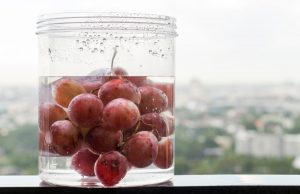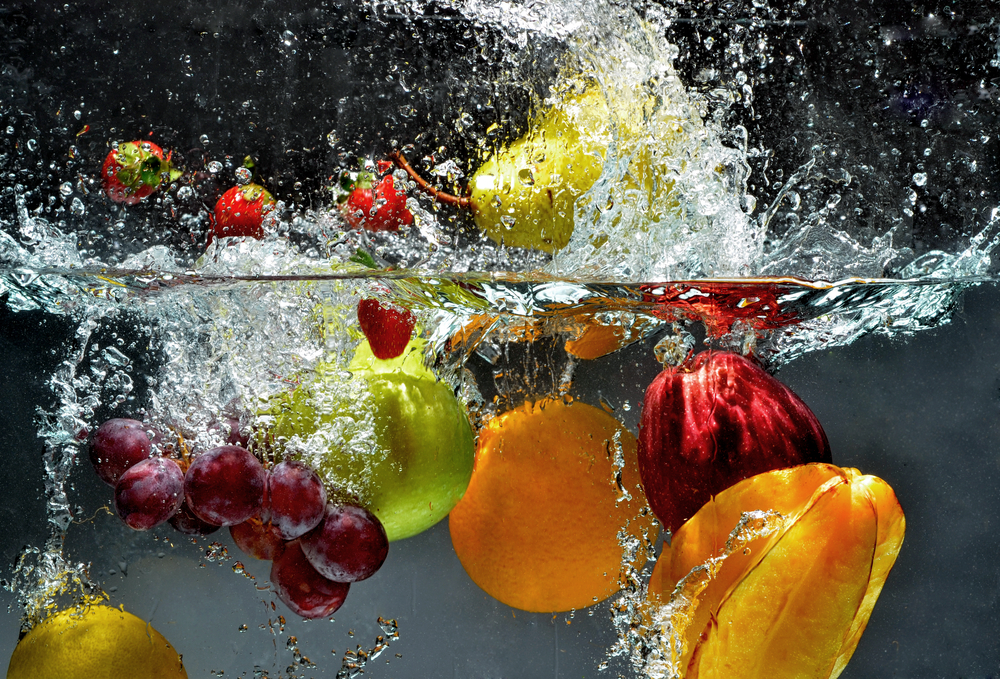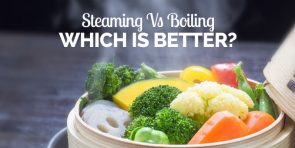Stop! You May Be Eating Pesticides
Are you welcoming the vicious bacteria with every morsel of your favorite fruits and veggies that you eat? Rinsing fruits and vegetables with water is not sufficient to remove the harmful contaminants from the surface of food items.
Rinsing with water is not enough to ensure the purity of fruits and vegetables. So what do you do? Worry not. Along with washing them right, there are several ways to purify them. From soaking them in a vinegar solution to using a fruits and vegetable cleaner, there are a lot of ways you can remove these harmful contaminants from food. So, in this blog, we give you a few tips to clean the food items thoroughly and ensure the good health of your loved ones.
Dip Them in a Vinegar Solution
Start with adding vinegar to the water. Add three parts of water to one part of vinegar. Soak your fruits and vegetables in the solution for ten minutes, and then rinse them with water to get rid of pesticide residues. This traditional home remedy for purifying fruits and vegetables from pesticides also works against bacteria and fungi. If you mix lemon drops with a vinegar solution, the concentration of acidity increases, making the cleansing process even more effective.
Sprinkle Lemon and Baking Soda Solution

Washing fruits and vegetables using homemade remedies such as lemon and baking soda not only helps to clean them of pesticide residues but also keeps their natural essence intact. Combine baking soda, lemon juice, and water together to create an effective purifying solution. Put the solution in a spraying bottle to cleanse them of leftover pesticides. After a few minutes of sprinkling, rinse the produce to make it ready to consume.
Soak Them in Hot Water

Veggies with a hardened outer surface like potato and cabbage may store some residual chemicals in the crevices even after being soaked in vinegar or lemon solution. Treat them with hot water for some time to make sure you have pesticide-free natural produce. Rather than just rinsing, soak them in hot water to get assured of good health.
Use Grapefruit Seed Extract (GSE)
The grapefruit seed extract is yet another remedy to make fruits and vegetables free of bacteria, fungi, and parasites. Did you know, that GSE is effective against over 800 viral and bacterial species! Plus, it has no side effects. No wonder they are widely used for cleaning natural produce. It is one of the most trusted elements to fight against infection and maintain good health.

These above-mentioned homemade remedies are widely put to use, but the rising cases of infection through fresh fruits & veggies are making us doubt if these are enough. So here comes technology to promote improved health by cleansing natural produce to the core- The ozone disinfection technology.
What are the best ways to remove pesticides from fruits and vegetables?
| Method | Effectiveness |
| Using Sonic Soak | This is the best method to make sure your fruits and vegetables are really clean. It removes almost all the pesticide residues and other harmful stuff, leaving them safe to eat. |
| Using baking soda | This method works better than just using water because it gets rid of around 90% of the pesticide residues on fruits and vegetables, making them safer to eat. |
| Using vinegar | This popular method can eliminate around 80% to 90% of pesticide residues from fruits and vegetables, making them safer to consume. |
| Washing under cold running water | This method works well in removing approximately 80% of pesticide residues, making your fruits and vegetables safe to eat. |
Technology can play a significant role in retaining the essential nutrients in fruits and veggies while making them fit for consumption. The use of ozone technology to clean fruits and veggies makes them much safer to eat. As washing removes only a few germs and pesticides from the surface of fruits and vegetables, residues in their crevices need to be removed through Ozone disinfection.
Ozone disinfection technology effectively and efficiently kills harmful bacteria, viruses, and fungus and also oxidizes even the slightest traces of pesticides and other farm chemicals. Along with removing harmful chemicals, it also keeps your weekly stock of fruits and vegetables fresh and de-odorized for a long. Its sleek and modern design makes it high on utility and style.
The rising awareness of healthy living has influenced people to add more fruit and veggie variants to their everyday diet. But is this enough? If the cleanliness of the produce is still a major concern for you, then take prompt action! Take the help of a fruit & veg purifier to make a remarkable move towards good health.
Frequently Asked Questions
1. Does lemon actually kill bacteria?
Lemon has natural antibacterial properties due to its acidic nature and contains compounds like citric acid, which can help inhibit the growth of some bacteria. However, it is not a strong enough disinfectant to fully kill all harmful bacteria on its own. While it can be useful for some cleaning purposes, it’s best to use proper disinfectants when dealing with potentially harmful bacteria.
2. What is a home remedy for pesticide?
One home remedy to remove pesticides from fruits and vegetables is to use a mixture of baking soda and water. Mix one teaspoon of baking soda in a bowl of water and soak the produce for a few minutes. Then, scrub the surface gently and rinse thoroughly with water. This can help reduce pesticide residues, but using a fruit and vegetable disinfectant is more effective.
3. Does baking soda kill pesticides?
Baking soda can help remove some pesticide residues from fruits and vegetables, but it may not entirely kill the pesticides. It is more effective at reducing surface pesticide levels. To use baking soda, mix it with water to create a solution and then scrub the produce gently. However, for complete safety, it’s best to use a commercial fruit and vegetable disinfectant or produce wash.




